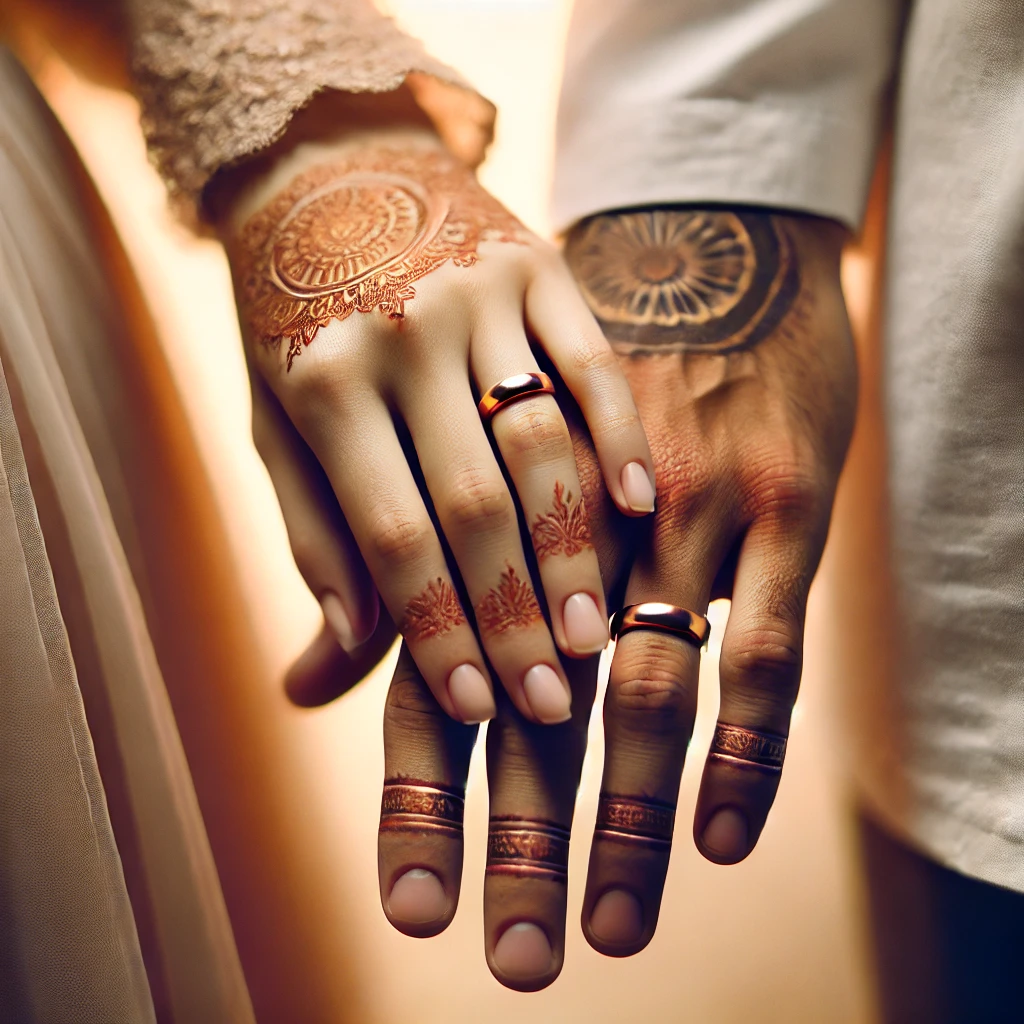What Hand Does a Wedding Band Go On?
Choosing which hand to wear a wedding band on holds a lot of significance for couples worldwide, as this small detail often reflects personal, cultural, and symbolic meanings. In this guide, we’ll explore which hand is traditionally used for wedding bands in different countries, how the practice has evolved, and modern variations based on personal preference and style.
1. The Traditional Hand for Wedding Bands: The Left Hand
In many Western cultures, people traditionally wear wedding bands on the left hand, on the fourth finger (also known as the “ring finger”). This practice stems from the ancient belief in the “vena amoris,” or “vein of love,” which was thought to run directly from the heart to this particular finger. Although anatomically incorrect, this romantic notion has persisted, and many still choose the left hand to symbolize a direct connection to the heart.
- United States and Canada: Most people in North America wear their wedding bands on the left hand, following long-standing Western customs.
- United Kingdom and Australia: Left-hand placement is also common in the UK and Australia, where couples follow similar traditions.
This practice signifies commitment and love, a sentiment that appeals to many couples who choose to follow it even today.
2. Right Hand Placement: A Common Choice in Other Cultures
In some countries and cultures, it’s more common to wear the wedding band on the right hand. The right hand has symbolic meanings of strength, trust, and honor, which some cultures prioritize for marital commitments. Here’s where you’ll typically see wedding bands worn on the right hand:
- Central and Eastern Europe: In countries like Germany, Russia, Poland, and Greece, couples traditionally wear their wedding bands on the right hand.
- India: While practices vary by region, many Indian couples wear wedding bands on the right hand, reflecting cultural preferences and religious beliefs.
- Latin America: In countries such as Colombia and Venezuela, the right hand is commonly used, though some couples switch the ring to the left after the wedding ceremony.
This tradition emphasizes cultural heritage and personal beliefs, allowing couples to express their commitment in a meaningful way that aligns with their background.
3. Engagement Rings vs. Wedding Bands: Where Each Ring Goes
Many people wonder about the placement of both engagement and wedding rings, especially when they choose to wear both. Here’s a common way people arrange their rings:
- Engagement Ring on the Left, Wedding Band on the Right: In some cultures, individuals wear the engagement ring on the left hand and the wedding band on the right. This distinction highlights the difference between pre-wedding commitment and marital union.
- Stacked on the Left Hand: In many Western countries, it’s traditional to stack the wedding band and engagement ring on the left hand, with the wedding band closest to the heart.
- Wedding Band Alone: Some people choose to wear only the wedding band, often on the left hand, removing the engagement ring after the wedding ceremony for simplicity.
These arrangements allow for flexibility, as couples can choose the setup that feels most meaningful and practical to them.
4. Modern Variations and Personal Preference
Today, many couples embrace flexibility when choosing which hand to wear their wedding bands on. Personal preference, lifestyle, and fashion all influence this decision, leading to new trends and variations:
- Dominant Hand Consideration: Some individuals choose to wear the wedding band on their non-dominant hand to avoid wear and tear, especially if they work with their hands frequently.
- Fashion Statements: For some, wedding bands are part of their style, and they may choose unconventional placements, like wearing the band on a necklace or the opposite hand, as a unique fashion statement.
- Same-Hand Placement Across Cultures: In multicultural marriages, couples may choose a common hand for unity or to honor both backgrounds, often picking the hand that aligns with one partner’s culture.
These modern adaptations reflect a more personalized approach to wedding traditions, where couples create their own symbolism for their commitment.
5. Why Do People Wear Wedding Bands on Specific Hands? Symbolic Meanings
The hand on which a wedding band is worn often carries symbolic meanings that resonate with couples. Here’s what each hand traditionally represents:
- Left Hand (Romance and Emotion): Many associate the left hand with the heart and emotions, making it a popular choice for wedding rings in Western traditions. This symbolic connection adds a layer of romance to the choice.
- Right Hand (Honor and Integrity): In many cultures, the right hand represents honor, integrity, and strength. Choosing the right hand for a wedding band aligns with these values, symbolizing a strong and trustworthy marriage.
These interpretations highlight the sentiment behind ring placement, showing how even a small detail can carry meaningful symbolism.
Frequently Asked Questions About Wedding Band Placement
- Can I wear my wedding band on either hand?
Yes, you can choose either hand based on personal preference, cultural tradition, or lifestyle. Modern practices allow for flexibility, so pick what feels right to you. - Why do some people wear wedding bands on a necklace?
Some people wear their wedding bands on a necklace for practical reasons or as a unique style choice. This option works well for individuals in professions where wearing rings may be unsafe. - Is it common to switch hands for a wedding band after the ceremony?
In some cultures, it’s traditional to switch the wedding band from the right to the left hand after the ceremony. This practice signifies a transition from engagement to marriage.
Conclusion
The hand on which a wedding band is worn can vary based on culture, tradition, and personal preference. Whether you choose the left hand, the right hand, or even a unique arrangement, your choice reflects the meaning and commitment you attach to your marriage. Understanding these traditions allows you to appreciate the symbolism behind each option, helping you select the one that resonates most with you and your partner.






